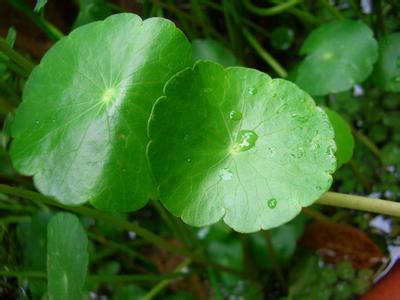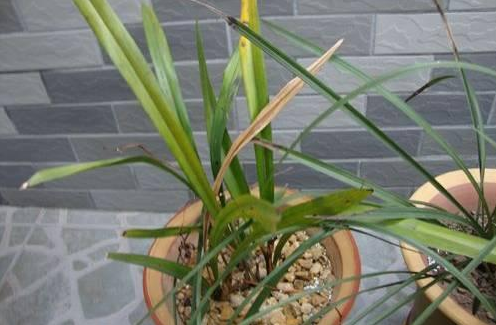How to raise the leaves of Phyllostachys pubescens in winter?
Since ancient times, Chinese people have been particularly fond of farmed plants, especially those with special meaning or function, such as Phyllostachys pubescens. So how to raise Phoenix tail bamboo in winter? What should I do if the leaves turn yellow? Let's take a look at it together.

Brief introduction of Phoenix tail Bamboo:
Phoenix tail bamboo, also known as Guanyin bamboo, rice bamboo, Jintou bamboo or Penglai bamboo and so on, is a variety of tufted bamboo and filial bamboo, belonging to the genus Gramineae. Phyllostachys pubescens is widely distributed, not only in China, but also in Japan, India and other countries. Phyllostachys pubescens is a kind of foliage plant, its branches and leaves are green, the bamboo pole is short, it looks very beautiful and beautiful, and it also has a very good air purification ability and can absorb formaldehyde in the air, so it generally appears in people's homes as a bonsai plant, which plays a good role in decoration and greening. At the same time, it is often used as a low hedge material, planted in flower beds in communities and parks.
How to raise Phoenix tail bamboo in winter:
1. Phyllostachys pubescens is an evergreen tufted shrub, which likes a warm and humid environment and is not resistant to cold, so it is difficult to cultivate Phyllostachys pubescens in winter. When breeding in winter, the first thing to pay attention to is the problem of light and temperature. Phyllostachys pubescens is not cold-resistant, and the temperature must not be lower than 0 degrees Celsius in winter, otherwise it will freeze to death. As a kind of foliage plant, sufficient light is the reason why its leaves are green. If there is not enough light, you can add some plant supplementary lights to make up the light.
2. Phyllostachys pubescens likes the humid environment, so we should pay attention to its moisture when breeding. Winter is cold, water evaporation is fast, it is better to irrigate less or not, too much water is easy to cause waterlogging, which is not conducive to the growth of its root system, at the same time, too much water, the cold is more serious, may be frozen bad.
3. In general, Phyllostachys pubescens needs to apply some organic fertilizer during its growth period, and thin nitrogen fertilizer is applied once or twice a month, but its growth rate is slow in winter and generally falls into a dormant period, so less fertilizer can be applied at this time, or no fertilizer can be applied. # p# subtitle # e #
What if the leaves of Phoenix tail bamboo turn yellow:
Yellowing leaves is a problem often encountered by many people who breed Phoenix tail bamboo. If this is to be solved, a specific analysis of the specific problem is needed. Sometimes it is because people water too much, so that the water of the plant is too heavy, so the leaves turn yellow, so it is necessary to reduce the amount of water and times of watering, and at the same time remove the excess water in the soil and bask in the sun more; and sometimes it is because of insufficient water, watering too little, this is the need to replenish water, when the soil is dry, it should be timely watering to keep the soil moist. In addition, the lack of fertilizer and lack of nutrients will also make the leaves yellow. at this time, it is necessary to apply more fertilizer and dilute the fertilizer with water to replenish the plant in time.
Phyllostachys pubescens is a very common foliage plant in our life, and it is also a kind of plant bonsai that we like very much, and its breeding method is not simple, so we still need to pay more attention in the process of breeding.
How to raise the leaves of Phyllostachys pubescens?
Farmed plants can cultivate sentiment, increase indoor activity and improve the air. Many plants are suitable for growing indoors, and Phoenix tail bamboo is one of them. Phyllostachys pubescens has a similar appearance to bamboo, so people who like bamboo but do not have the conditions to grow it might as well try planting it. Let's learn how to raise Phyllostachys pubescens and what to do if the leaves turn yellow.
How to raise the leaves of Phyllostachys pubescens?
First, how to raise Phoenix tail bamboo-- temperature
Phyllostachys pubescens is a temperature-loving plant, which can not be lower than cold. It is more difficult to grow Phyllostachys pubescens in winter. If winter culture needs to pay attention to keeping the bamboo warm and constant temperature, it can not stand the cold. If the growth temperature of Phyllostachys pubescens is below zero, it will freeze to death. Therefore, in order to fully plant Phoenix tail bamboo, we need enough temperature.
Second, how to raise Phoenix tail bamboo-- watering
Phoenix tail bamboo likes to be wet, so the easiest way is to water more and pay less water in winter to prevent stagnant water and root rot. In the cold temperature environment, attention should be paid to keeping warm and watering at the same time, otherwise water condensation will directly cause freezing damage to Phyllostachys pubescens.
Third, how to raise Phoenix tail bamboo-- fertilizer
Phyllostachys pubescens needs organic fertilizer, which can be applied every other month or two months. In winter, Phyllostachys pubescens either grows slowly or begins to dormancy, so it is more reasonable to reduce the frequency and amount of fertilization.
What if the leaves of Phyllostachys pubescens turn yellow
The more appropriate way to improve the yellowing of Phyllostachys pubescens leaves is to reduce watering, bask in the sun and fertilize properly at the same time.
How to raise _ leaves of Phyllostachys pubescens in winter
Since ancient times, Chinese people have been particularly fond of farmed plants, especially those with special meaning or function, such as Phyllostachys pubescens. Phoenix tail bamboo, listen to this name, many people like it, and its appearance is also similar to the general green bamboo, from the Chinese people love bamboo psychology, love my house and black, so also love Phoenix tail bamboo very much. So how to cultivate Phyllostachys pubescens? what should be done if its leaves turn yellow? Now let's take a look at it together.
Brief introduction of Phyllostachys pubescens
Phoenix tail bamboo, also known as Guanyin bamboo, rice bamboo, Jintou bamboo or Penglai bamboo and so on, is a variety of tufted bamboo and filial bamboo, belonging to the genus Gramineae. Phyllostachys pubescens is widely distributed, not only in China, but also in Japan, India and other countries. Phyllostachys pubescens is a kind of foliage plant, its branches and leaves are green, the bamboo pole is short, it looks very beautiful and beautiful, and it also has a very good air purification ability and can absorb formaldehyde in the air, so it generally appears in people's homes as a bonsai plant, which plays a good role in decoration and greening. At the same time, it is often used as a low hedge material, planted in flower beds in communities and parks.
How to raise Phyllostachys pubescens in winter
1. Phyllostachys pubescens is an evergreen tufted shrub, which likes a warm and humid environment and is not resistant to cold, so it is difficult to cultivate Phyllostachys pubescens in winter. When breeding in winter, the first thing to pay attention to is the problem of light and temperature. Phyllostachys pubescens is not cold-resistant, and the temperature must not be lower than 0 degrees Celsius in winter, otherwise it will freeze to death. As a kind of foliage plant, sufficient light is the reason why its leaves are green. If there is not enough light, you can add some plant supplementary lights to make up the light.
2. Phyllostachys pubescens likes the humid environment, so we should pay attention to its moisture when breeding. Winter is cold, water evaporation is fast, it is better to irrigate less or not, too much water is easy to cause waterlogging, which is not conducive to the growth of its root system, at the same time, too much water, the cold is more serious, may be frozen bad.
3. In general, Phyllostachys pubescens needs to apply some organic fertilizer during its growth period, and thin nitrogen fertilizer is applied once or twice a month, but its growth rate is slow in winter and generally falls into a dormant period, so less fertilizer can be applied at this time, or no fertilizer can be applied.
What if the leaves of Phyllostachys pubescens turn yellow?
Yellowing leaves is a problem often encountered by many people who breed Phoenix tail bamboo. If this is to be solved, a specific analysis of the specific problem is needed. Sometimes it is because people water too much, so that the water of the plant is too heavy, so the leaves turn yellow, so it is necessary to reduce the amount of water and times of watering, and at the same time remove the excess water in the soil and bask in the sun more; and sometimes it is because of insufficient water, watering too little, this is the need to replenish water, when the soil is dry, it should be timely watering to keep the soil moist. In addition, the lack of fertilizer and lack of nutrients will also make the leaves yellow. at this time, it is necessary to apply more fertilizer and dilute the fertilizer with water to replenish the plant in time.
Conclusion: Phyllostachys pubescens is a very common foliage plant in our life, and it is also a kind of plant bonsai that everyone likes very much, and its breeding method is not simple, so we still need to pay more attention in the process of breeding.
- Prev

What are the reasons for the yellow leaves of copper grass?
The shape of copper money grass is lovely, the plants are clustered into a group, and the green leaves are embellished, which has a good ornamental value. Therefore, copper money grass is used as a potted culture. How do you raise copper coins? 1) The earth shall be filled with water, and the earth shall be filled with water, and the earth shall be filled with water.
- Next

Why is the orchid leaves yellow and withered and rotten? what about the disease spots on the leaves?
To talk about this orchid, this is a kind of plant that many people like very much. Upon hearing the name, it is very elegant, but it is not easy to raise this orchid well. Let's take a look at why the orchid leaves are yellow and withered and rotten roots. What if the orchid leaves are spotted: why are the leaves yellow?
Related
- Fuxing push coffee new agricultural production and marketing class: lack of small-scale processing plants
- Jujube rice field leisure farm deep ploughing Yilan for five years to create a space for organic food and play
- Nongyu Farm-A trial of organic papaya for brave women with advanced technology
- Four points for attention in the prevention and control of diseases and insect pests of edible fungi
- How to add nutrient solution to Edible Fungi
- Is there any good way to control edible fungus mites?
- Open Inoculation Technology of Edible Fungi
- Is there any clever way to use fertilizer for edible fungus in winter?
- What agents are used to kill the pathogens of edible fungi in the mushroom shed?
- Rapid drying of Edible Fungi

